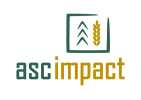Strategies for Responsible Mineral Resource Management
Mineral resources are the lifeblood of our modern society. They fuel our industries, power our cities, and form the building blocks of our infrastructure.
Yet, the extraction and management of these resources pose significant challenges. Mining activities can lead to environmental degradation, social disruption, and economic instability.
The concept of responsible mineral resource management is gaining traction. It aims to balance the need for minerals with the imperative of sustainability.
This article delves into strategies for responsible mineral resource management. It explores the environmental, economic, and social implications of mining.
We will also highlight the role of technology, policy, and community engagement in promoting sustainable practices. Whether you’re a policymaker, industry professional, or simply interested in sustainable development, this article offers valuable insights.
Join us as we navigate the path towards a more sustainable future in mineral resource management.
Understanding Mineral Resources and Their Global Impact
Mineral resources are naturally occurring substances with economic value. They include metals, non-metals, and fossil fuels.
The global demand for these resources is on the rise. Rapid urbanization and technological advancements are driving this growth.
However, mining activities can have severe environmental impacts. Habitat destruction, water pollution, and carbon emissions are common issues.
Understanding these impacts is crucial. It forms the basis for developing strategies for responsible mineral resource management.
The Pillars of Sustainable Mining
Sustainable mining is a key concept in mineral resources management. It aims to minimize the negative impacts of mining while maximizing benefits.
There are three main pillars of sustainable mining. These are environmental stewardship, social responsibility, and economic viability.
- Environmental stewardship involves minimizing the environmental impact of mining. This includes reducing carbon emissions and preserving biodiversity.
- Social responsibility refers to respecting the rights of local communities and indigenous populations. It also involves ensuring fair distribution of mining benefits.
- Economic viability means that mining operations must be profitable. However, this should not be at the expense of the environment or social welfare.
These pillars guide the development of strategies for responsible mining. They ensure that mining activities are beneficial to all stakeholders.
Adopting sustainable mining practices is not just an ethical choice. It is a strategic decision that can lead to long-term profitability and resilience.
Technological Innovations in Mineral Resources Management
Technology plays a crucial role in mineral resources management. It helps improve efficiency and reduce environmental impact.
For instance, artificial intelligence and machine learning can optimize mineral extraction. They can also enhance processing techniques.
Geospatial data and satellite imagery are also valuable. They aid in monitoring mining activities and assessing their impact.
Innovations like these are transforming the mining industry. They are paving the way for more sustainable and responsible practices.
Case Studies: Success Stories in Responsible Mining
Several mining companies have successfully implemented responsible practices. These cases serve as models for the industry.
One example is the use of life cycle assessments. These tools measure the environmental impact of mining projects. They help companies make informed decisions.
Another success story is the adoption of green mining certifications. These standards promote eco-friendly practices. They also enhance the reputation of mining companies.
These case studies prove that responsible mineral resource management is achievable. They inspire other companies to follow suit.
Community and Stakeholder Engagement in Mining
Engaging with local communities is crucial in mining. It ensures that the rights of indigenous populations are respected.
Transparent communication is key. It helps build trust between mining companies and local communities.
Stakeholder engagement also plays a vital role. It allows for public participation in mining decisions. This leads to more sustainable outcomes.
In conclusion, community and stakeholder engagement is a cornerstone of responsible mineral resource management. It fosters mutual respect and cooperation.
Economic Advantages of Sustainable Mineral Resource Management
Responsible mineral resource management has economic benefits. It can lead to job creation and long-term profitability.
Transparent and ethical supply chains are also economically beneficial. They can enhance a company’s reputation and customer trust.
Moreover, responsible practices can attract impact investors. These investors seek to drive change in the mining industry.
In summary, sustainable mining is not just environmentally friendly. It also makes good business sense. It can lead to economic growth and stability.
Regulatory Frameworks and Mining Policies
Regulations and policies play a crucial role in promoting responsible mining. They set the standards for environmental protection and social responsibility.
For instance, mining regulations can mandate site rehabilitation. They can also enforce transparent supply chains.
International organizations also set global standards. These standards guide responsible mining practices worldwide.
In conclusion, effective regulations and policies are key. They ensure that mining operations are sustainable and responsible.
Rehabilitation and Post-Mine Land Use
Rehabilitation is a crucial part of responsible mining. It involves restoring the mined land to its original state or better.
This process can be complex. It often involves soil replacement and re-vegetation.
Post-mining land use is also important. Mines can be repurposed for alternative uses, like renewable energy projects.
In conclusion, effective rehabilitation and thoughtful post-mining land use are key. They ensure the long-term sustainability of mining operations.
The Future of Mining: Circular Economy and Renewable Energy
The future of mining lies in the circular economy. This concept involves reducing waste and making the most of resources.
In mining, this could mean reusing and recycling materials. It could also involve finding ways to extend the life of a mine.
Renewable energy also plays a role. It can help reduce the mining sector’s carbon footprint.
““
In conclusion, the circular economy and renewable energy are key to the future of mining. They can help make mineral resource management more sustainable.
Conclusion: The Path Forward for Mineral Resources Management
Responsible mineral resource management is crucial. It ensures the sustainability of the mining industry and protects our environment.
The path forward involves continuous learning and innovation. It requires collaboration across sectors and a commitment to best practices.
Regulations and policies play a key role. They can promote responsible practices and ensure transparency in the industry.
In conclusion, the future of mineral resources management lies in our hands. With the right strategies, we can ensure a sustainable and prosperous future for all.




















































